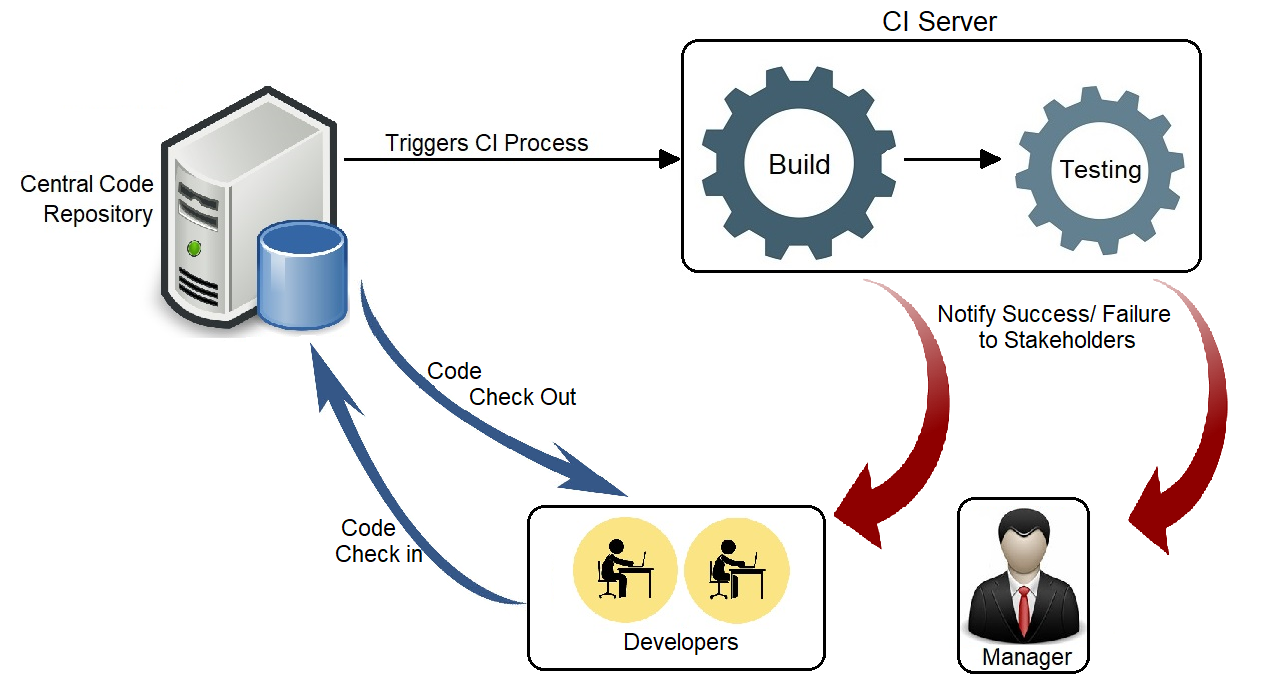Continuous Integration
by Webomates Inc Test Automation CompanyContinuous Integration has become a critical element in current devops practices and is the first step in a CI/CD (Continuous Integration/Continuous Deployment) process. Many agile cloud based companies are implementing this process to achieve two primary goals:
- Improve Quality
- Improve Velocity (that is the speed of feature deployment)
Often full CI/CD implementation span development, integration and production with new features and bug fixes being pushed into production via this process and significantly improving deployment speed to production.
Thus,features are introduced in production days or even hours after feature development is completed. In contrast traditional development processes would take weeks or even months to deploy features into production.
For the ease of development, the whole design is broken down into modules which are then handled by different teams of developers and/or individual developer. This whole process has its own challenges when it comes to synergizing these modules into a single unit to verify and validate the end product. The coding process is not an error free activity, despite individual tests being executed and white box testing being performed by the development team. Issues can crop up while integrating these modules because of a variety of reasons. And these issues, if discovered late in the Software Development Cycle, can prove costly to the business. Here is a definition:
Continuous Integration (CI) is a development practice which takes care of integration issues early in the development cycle thus accelerating collaborative Software Development process.
This article focuses on how Continuous Integration can help the technical and business stakeholders in developing and releasing high quality software, thus ensuring maximum customer satisfaction.
Continuous Integration Process
Continuous Integration (CI) is a software development practice that requires developers to integrate code into a shared version control repository with every task completion. Code check-in triggers an automated build process which then further invokes the testing routines. These testing routines use automated test scripts to test the code and report the bugs, if any. If no errors are found, then it implies that the developer’s code changes are acceptable.

Typically, a software is an aggregation of several modules which are developed by different developers. Every module is comprised of a significant number of files.
Visualize a scenario where the smallest change in a file has a cascading effect on the output of that particular module and eventually impacting the expected outcome of the software.
Before the Continuous Integration era, the Developers had to spend a considerable amount of time in integrating their modules seamlessly. Integration became an expensive exercise since a lot of time was spent in testing, debugging and retesting. Continuous Integration is a pre-emptive measure for detecting integration issues earlier in Software Development Cycle, thus saving critical time which can then be used for improving the software or building new features.
Ideally it is prudent to integrate code at every change that makes even the smallest impact in the functioning of the software. This could range from a minimum of one check-in per day to several times a day.
The main goal of Continuous Integration is to provide feedback on defects discovered during code merges, prompting immediate action, thereby preventing issues which emerge later in the Development Cycle. Risk mitigation is significantly reduced as it is much easier to detect and rectify bugs in early stages of development. Read More about : Continuous Integration
If this has picked your interest and you want to know more, then please click here and schedule a demo, or reach out to us at info@webomates.com.
We have more exciting articles coming up every week. Stay tuned and like/follow us at
LinkedIn – Webomates LinkedIn Page
Facebook – Webomates Facebook page
For More Information visit us at : webomates.com
Sponsor Ads
Created on Jan 4th 2022 00:54. Viewed 192 times.



